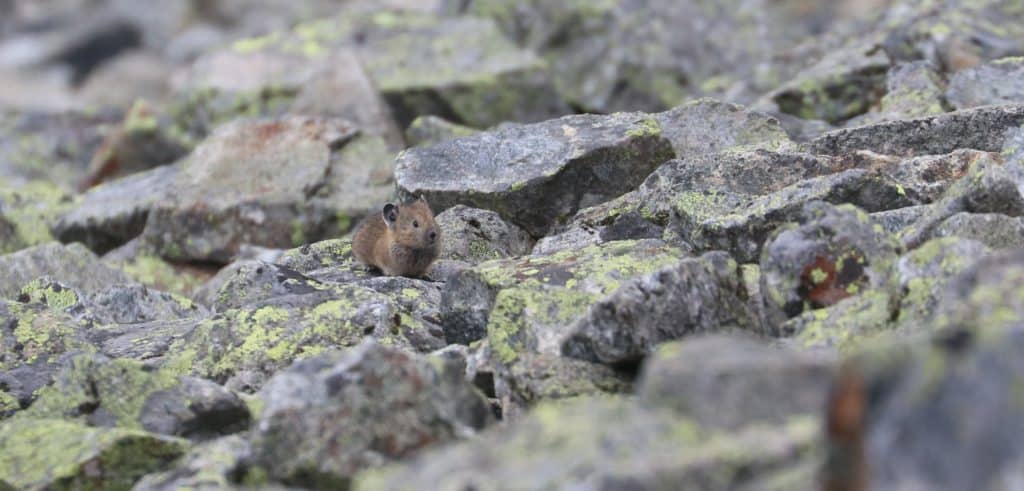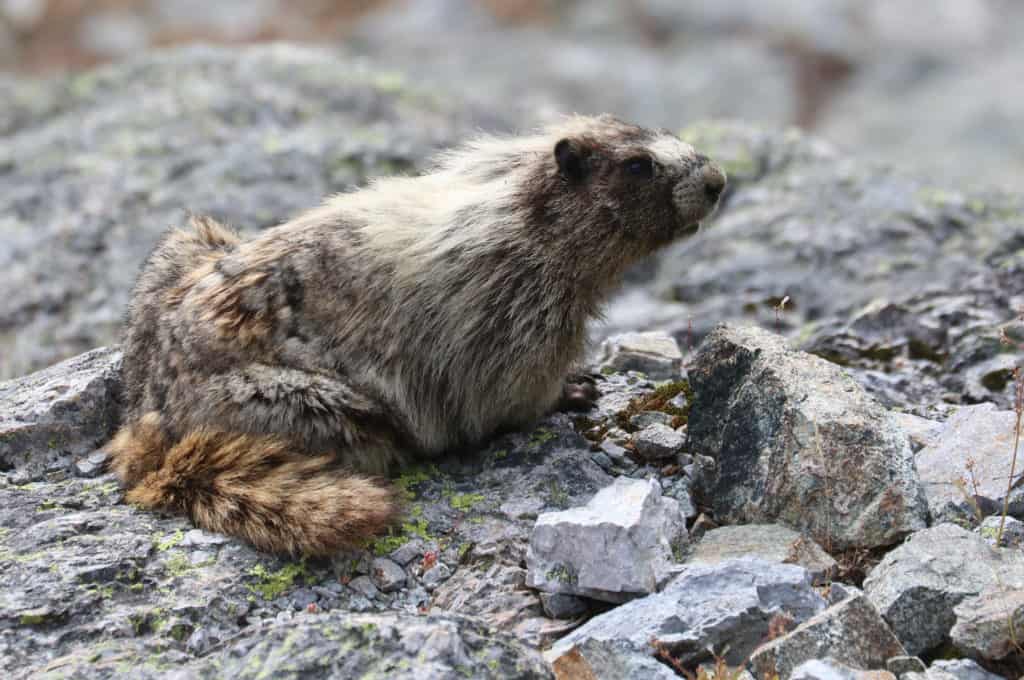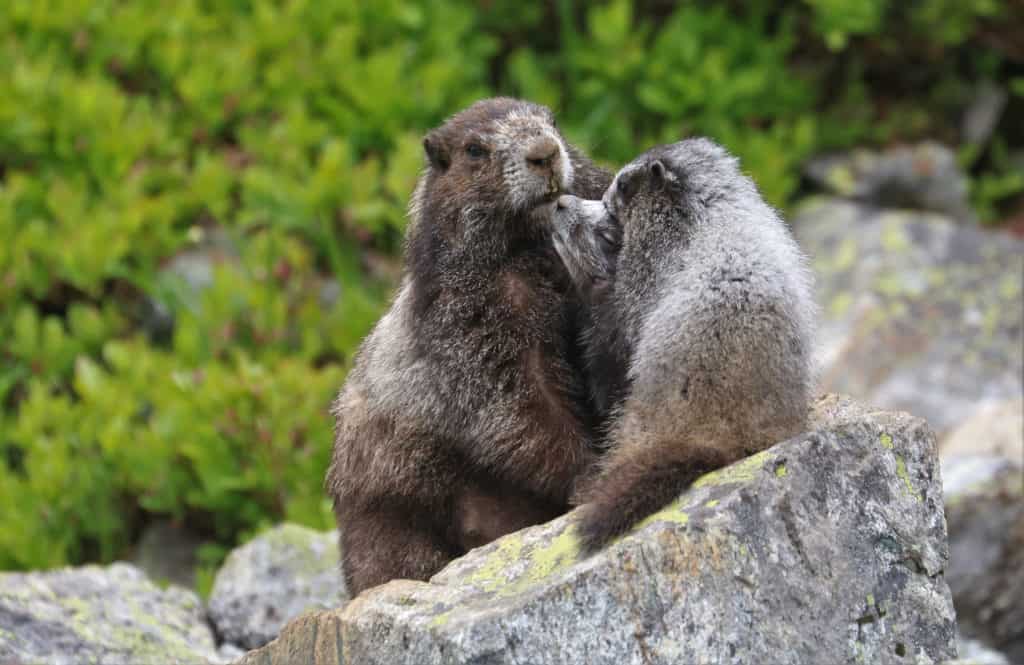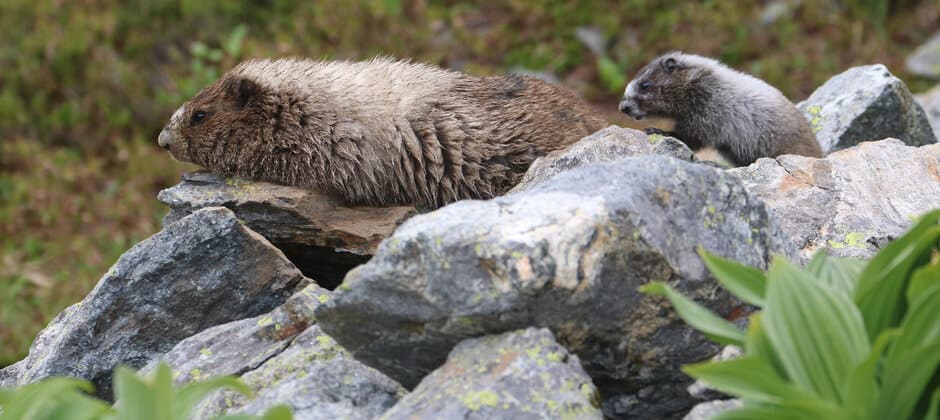Share this article
Hoary marmots can’t cope with snow droughts
Increasing frequency and length of snow droughts in Washington state may be linked to hoary marmot population declines.
“Hoary marmots are one of many subnivean species that may be stressed by snow drought or declining snowpack,” said Aaron Johnston, a research ecologist with the U.S. Geological Survey. Subnivean refers to the environment that exists between snow and terrain, where marmots create the burrows they hibernate in during the winter.
The Pacific Northwest has been experiencing variability in snowpack related to climate change for years. The winter of 2014-2015 saw a record low snowpack, partly since warmer temperatures caused it to rain rather than snow.
These warm events are expected to become more common, and researchers wanted to know how changes in snowpack would impact wildlife populations like American pikas (Ochotona princeps) and hoary marmots (Marmota caligata).
A study published in 2019 showed that pikas were affected by snowpack droughts in North Cascades National Park.
Now, a new study Johnston led published recently in Ecology and Evolution shows hoary marmots are affected by these snow droughts as well, though in different ways.

Pikas were also affected by snow droughts. Credit: Jason Ransom
“Increasing evidence suggests these species depend on snowpack for insulation from cold temperatures during winter,” Johnston said. “Snow drought also could have indirect effects on these species through early season melt-off and changes to the vegetation that marmots consume.”
Johnston and his team estimated marmot abundance at 19 sites in North Cascades National Park from the period of 2007-2008 as well as in 2016 and 2017. They used information on projected temperatures and snowpack cover to develop population models.
In the national park, marmot numbers dropped by 74% between 2008 and 2016. Abundance jumped slightly in 2017, but still remained lower than the during the 2007-2008 period.
Their models showed that the best predictor of marmot abundance was the interaction between moisture and cold the previous year. “Atmospheric moisture is an important, but poorly studied, aspect of climate that influences animal populations directly through physiological effects or indirectly through effects on vegetation,” Johnston said.
Extreme cold with no snowpack the year before seemingly led to decreased marmot numbers in a given winter due to low reproduction and low juvenile survival. That means the snow drought of 2015 may have led to decreased marmot numbers in 2016.

Juvenile hoary marmots had lower survival the year following snow droughts. Credit: Jason Ransom
This matched a one-year lag effect the researchers saw in pikas in the earlier study, though snowpack absence seemed to boost pika populations at the highest elevations where they occurred with marmots. Pika populations, however, decreased at lower elevations after the snow drought.
“Whereas physiological stress on hibernating marmots from cold exposure during snow drought may have led to decreased abundance, pika responses to snow drought were more likely related to forage availability,” Johnston said.
He said that while both of these species are still relatively common in North Cascades National Park, it’s important to understand the changes that snow droughts may have on them as it could have ecological impacts. Both pikas and marmots consume alpine vegetation and are important prey species for larger predators in the park like wolverines (Gulo gulo).
“Marmot recovery may not be possible in areas that will no longer have enough snowpack because of increasing temperatures,” Johnston said.

An adult hoary marmot with two juveniles. Credit: Jason Ransom
Johnston said further research is needed to see if snow droughts might lead to other things that affect marmot numbers like the growth of the vegetation they eat. They would also like to know whether these population declines in North Cascades are part of a larger pattern of marmot decreases in the Pacific Northwest.
“For example, populations may be stressed by changes to vegetation associated with low snowpack that accumulate over time, or marmots may experience increased predation by novel species like coyotes that encroach on high-elevation areas in the absence of snow,” he said.
Header Image: An adult and juvenile hoary marmot. Credit: Jason Ransom








